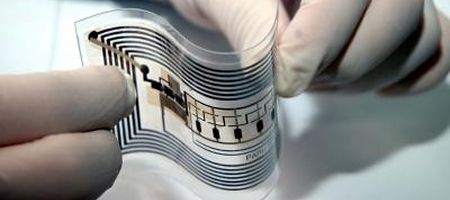We could soon all be strolling past the checkout with a cartful of goods, thanks to the development of new, printable, nano-based RFID tags.
Researchers in the US and Korea have come up with a transmitter that can be invisibly embedded in packaging. Customers could simply walk past a scanner on the way to the car; the scanner would read all items in the cart at once, tot them up and charge the customer’s account while adjusting the store’s inventory.

The technology is based on a carbon-nanotube-infused ink for ink-jet printers, which is used to make thin-film transistors – a key element in RFID tags that can be printed on paper or plastic. The cost could be as little as a penny each.
The team used a three-step process to print one-bit tags, including the antenna, electrodes and dielectric layers, on plastic foil. They’re now working on 16-bit tags that would hold more information and be printable on paper as well.
There are several hurdles to commercialization. First, the device needs to get a bit smaller, said Rice University’s James Tour. Second, its range must increase.
“Right now, the emitter has to be pretty close to the tags, but it’s getting farther all the time,” he said. “The practical distance to have it ring up all the items in your shopping cart is a meter. But the ultimate would be to signal and get immediate response back from every item in your store – what’s on the shelves, their dates, everything.
“At 300 meters, you’re set – you have real-time information on every item in a warehouse. If something falls behind a shelf, you know about it. If a product is about to expire, you know to move it to the front – or to the bargain bin.”






